Studio Visit
How Brie Ruais Uses Her Own Body to Shape Her Clay Sculptures, and the Desert Sounds That Keep Her Motivated
The artist is having her first solo museum show at Rice University's Moody Center for the Arts.
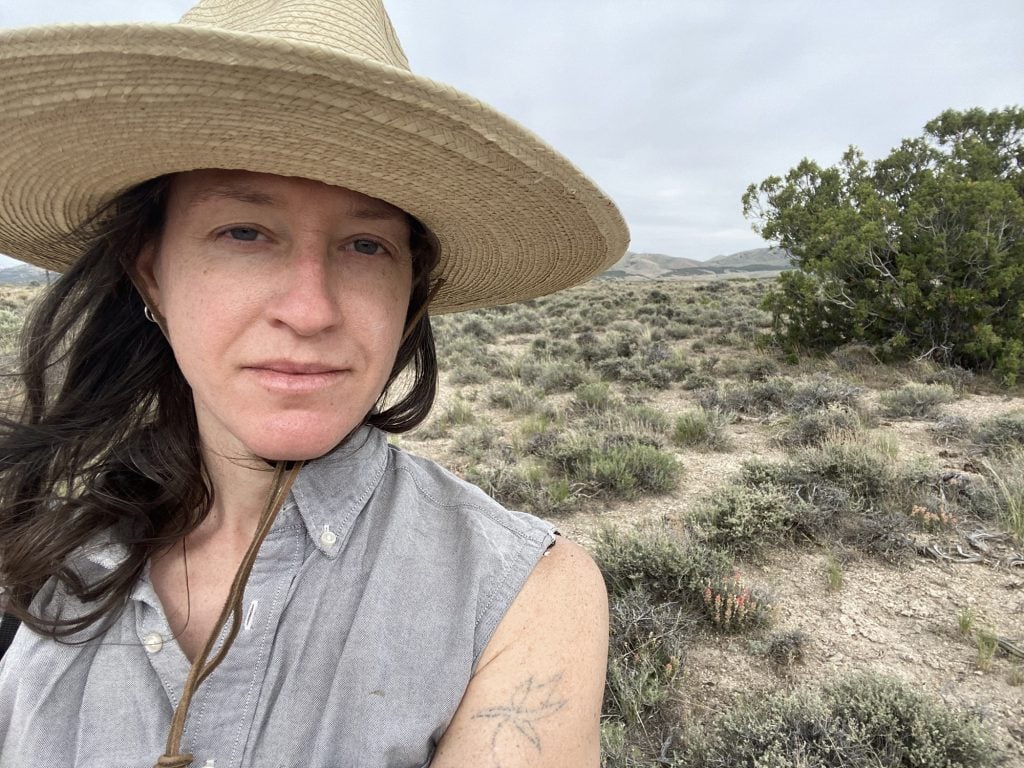
The artist is having her first solo museum show at Rice University's Moody Center for the Arts.

Sarah Cascone

For every work of art that Brie Ruais makes, she starts with her body weight in clay, bringing new meaning to the term “life-size” sculpture.
The Brooklyn-based artist pushes, pulls, and scrapes the clay against the ground or the wall, using her body as the primary tool for her unusually physical method of art-making. Ruais then paints the abstract sculptures, accentuating the intimate gestural marks left on the surface of the clay to highlight the connection between our bodies and the earth. (She often works in the Nevada desert.)
“My work is like the terrain of the body translated into geology,” Ruais told Artnet News in an email.
On the occasion of her first institutional solo show, at the Moody Center for the Arts at Rice University in Houston, Ruais spoke with Artnet News about her studio habits, how being in touch with nature fuels her creativity, and why a balance between city life and the great outdoors is essential to her unique practice.
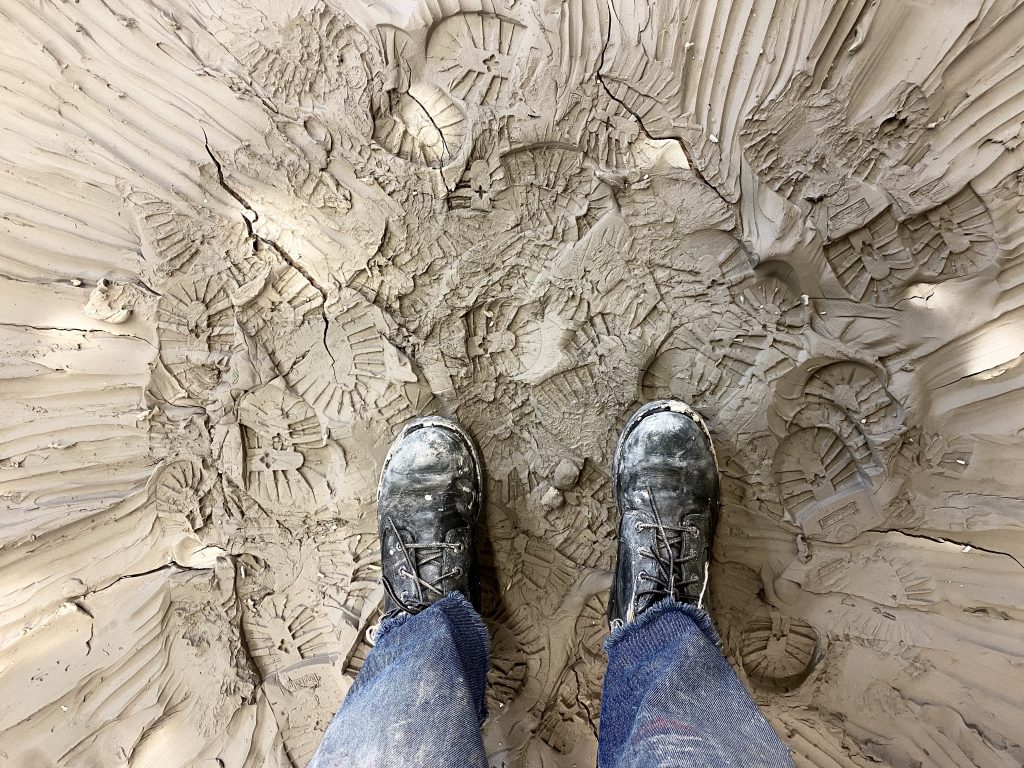
Brie Ruais making her ceramic sculpture. Photo courtesy of the artist and Albertz Benda Gallery, New York.
What are the most indispensable items in your studio and why?
In my Brooklyn studio, it would have to be my kilns. Having them in my space allows the work to flow seamlessly from where it is made (the floor) into the kiln and then into the world. When I’m off-grid on my land in the desert, all I need is clay and a camera drone to document the earthworks I’m making there.
What is the studio task on your agenda tomorrow that you are most looking forward to?
I’m starting some preliminary sketches for a new project. Next month I’ll be working in New Mexico with the ceramicist Ralph Scala, harvesting clay from a mine in the Galisteo area. So I’m in the midst of thinking through how to engage with that site, land, and history.
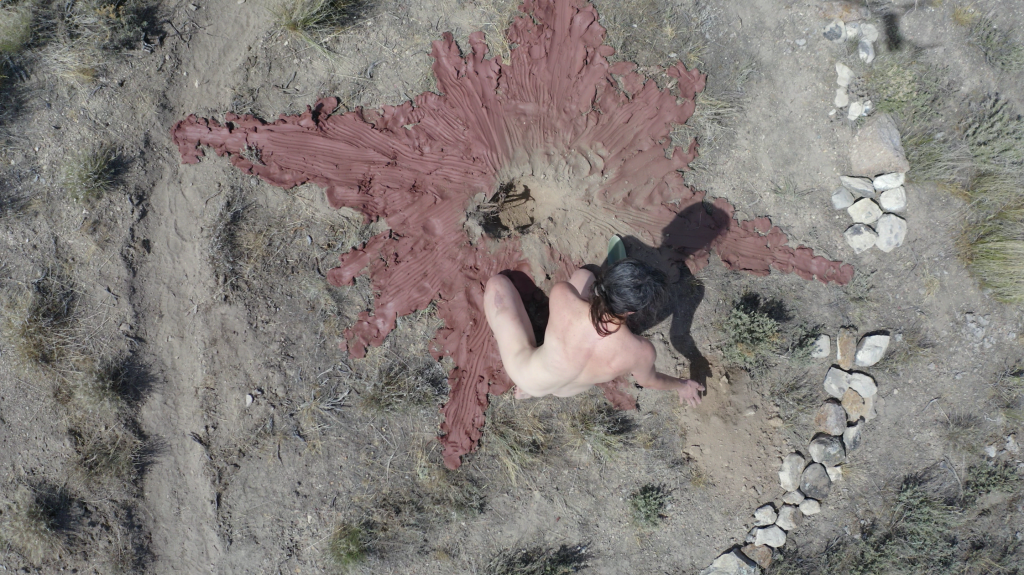
Brie Ruais making her ceramic sculpture. Photo courtesy of the artist and Albertz Benda Gallery, New York.
What can people expect to see at your first museum show, on view now at the Moody Center for the Arts at Rice University?
An expansive ceramic floor installation, half of which sprawls out onto the campus grounds, punctuating the lawn with pits (that keep filling with rainwater!) and mounds of earth. The second gallery has monumental ceramic wall sculptures that create a rhythmic movement through the space, one that was inspired by a performance I did at the beach with clay (which is also present, in the form of a three-channel video projection).
What viewers can expect to feel is more interesting to me—I hope the exhibition opens up an opportunity for the viewer to feel a connection to the earth.
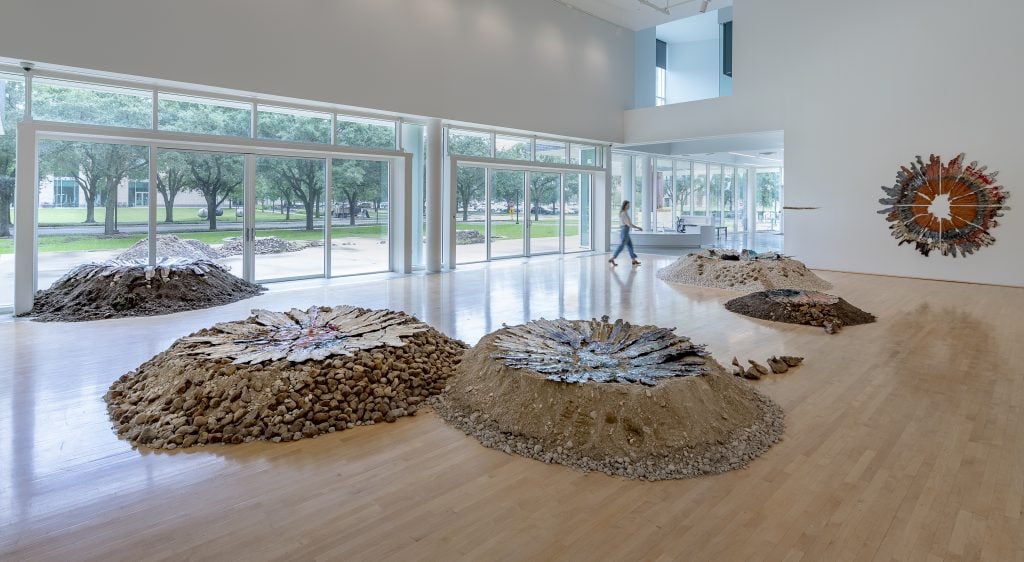
Installation view of “Brie Ruais: Movement at the Edge of the Land.” Photo by Nash Baker, courtesy of the Moody Center for the Arts, Rice University, Houston; Albertz Benda Gallery, New York; and Night Gallery, Los Angeles.
What kind of atmosphere do you prefer when you work?
In the city, I like hearing the noises of the mechanic shops next door; I kind of thrive on the energy of the humming city. I also need to spend time alone in the Great Basin desert in Nevada, where the energy is more connected to the rhythms of the natural world: the sun passing overhead, the habits and movements of animals. I like being in tune with both the social and elemental pulses of these different worlds. Experiencing them both in such sharp relief allows me to have a deeper understanding of their interconnectedness.
Do you listen to music or podcasts, or do you prefer silence?
I make my 130 pound clay pieces in a single burst, in under 15 minutes, so I need the energy music provides to move that much clay around. Lately I’ve been leaning on Robyn and Perfume Genius.
When I’m working in the desert I prefer total silence—the birds and coyote make a lovely soundtrack.
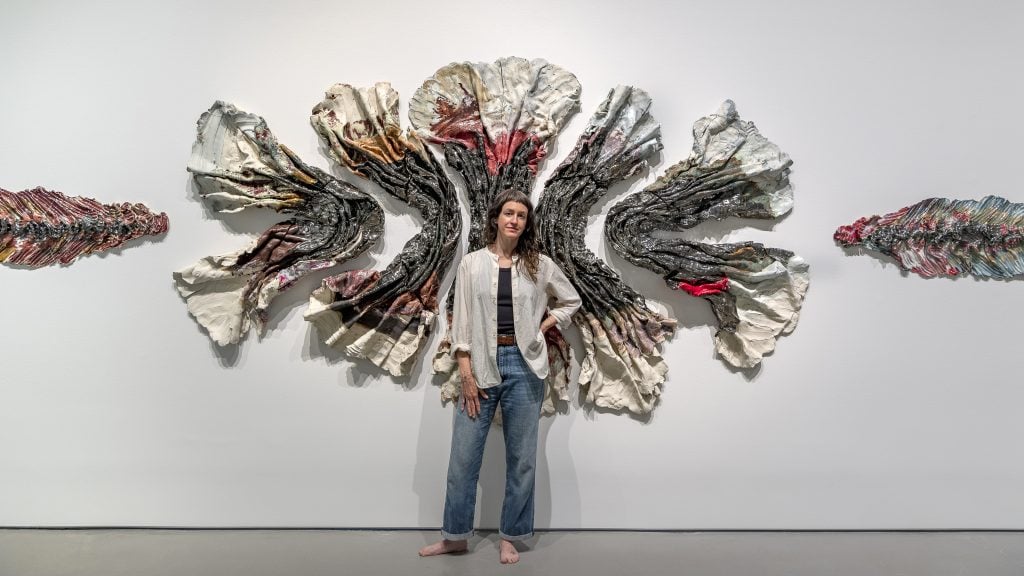
The artist with her work in “Brie Ruais: Movement at the Edge of the Land.” Photo by Nash Baker, courtesy of the Moody Center for the Arts, Rice University, Houston; Albertz Benda Gallery, New York; and Night Gallery, Los Angeles.
What trait do you most admire in a work of art?
Generosity. I am most affected by art that reveals the artist to be fearless and uncompromising in their dedication to their practice. That kind of work opens up vulnerability and all the other emotions that make us human and allow us to connect to each other.
What trait do you most despise?
I’m not interested in work that feels like the artists’ inquiry or investigation has stopped, settled, or otherwise gotten too comfortable.
What snack food could your studio not function without?
Snickers. It’s the perfect protein-plus-sugar pick-me-up around 4 p.m.
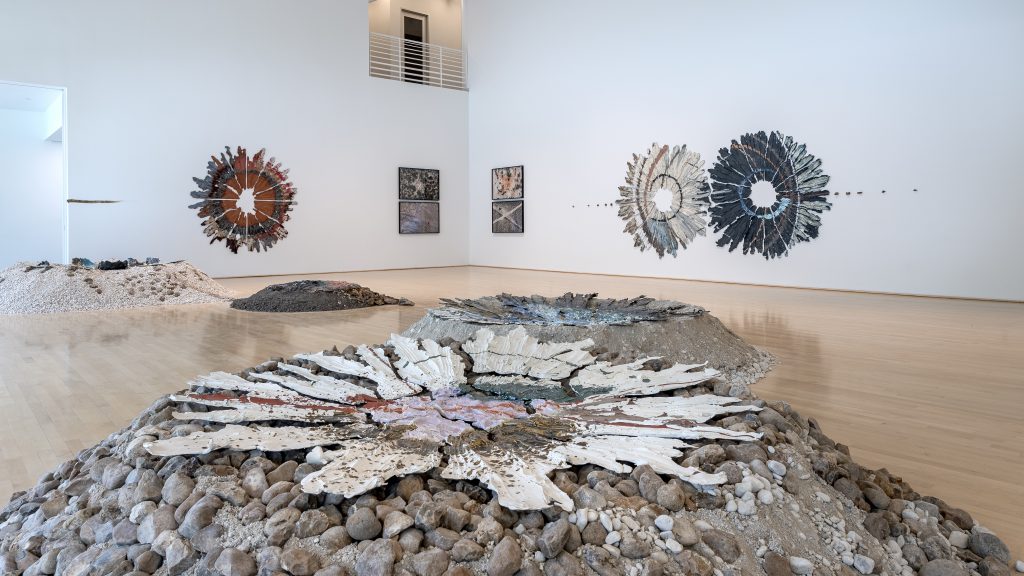
Installation view of “Brie Ruais: Movement at the Edge of the Land.” Photo by Nash Baker, courtesy of the Moody Center for the Arts, Rice University, Houston; Albertz Benda Gallery, New York; and Night Gallery, Los Angeles.
Who are your favorite artists, curators, or other thinkers to follow on social media right now?
@landartcollective: A lot of emerging artists making work with natural materials and thinking about land use issues. @ravenhalfmoon: I love the posts of her large-scale ceramics in process. @calearthinstitute: Inspiring to me for thinking about sculpture as architecture and vice-versa.
When you feel stuck in the studio, what do you do to get un-stuck?
Put away or destroy the thing that has me stuck.
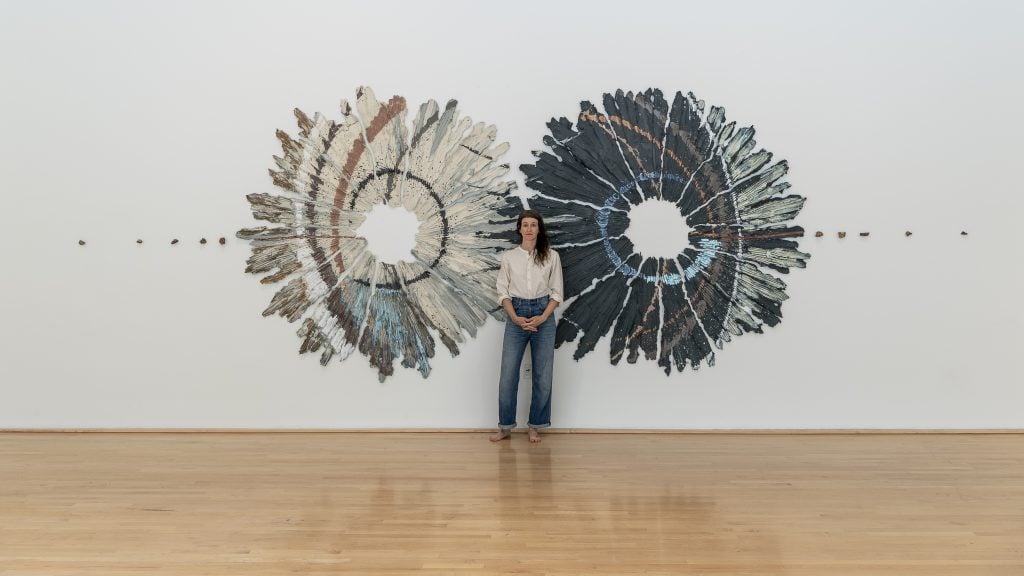
The artist with her work in “Brie Ruais: Movement at the Edge of the Land.” Photo by Nash Baker, courtesy of the Moody Center for the Arts, Rice University, Houston; Albertz Benda Gallery, New York; and Night Gallery, Los Angeles.
What is the last exhibition you saw (virtual or otherwise) that made an impression on you?
The Lucy Raven show at Dia: Chelsea. It’s a video work that follows the journey of gravel and rock from mine to cement factory to its final product. It’s shot from the perspective of the material itself, as if the stone is telling its own story.
If you had to put together a mood board, what would be on it right now?
A photo of the moon rising over the city, a photo of the sun setting in the desert, and a poem by Ocean Vuong.
“Brie Ruais: Movement at the Edge of the Land” is on view at the Moody Center for the Arts, Rice University, 6100 Main Street, MS-480, Houston, Texas, June 5–August 28, 2021.